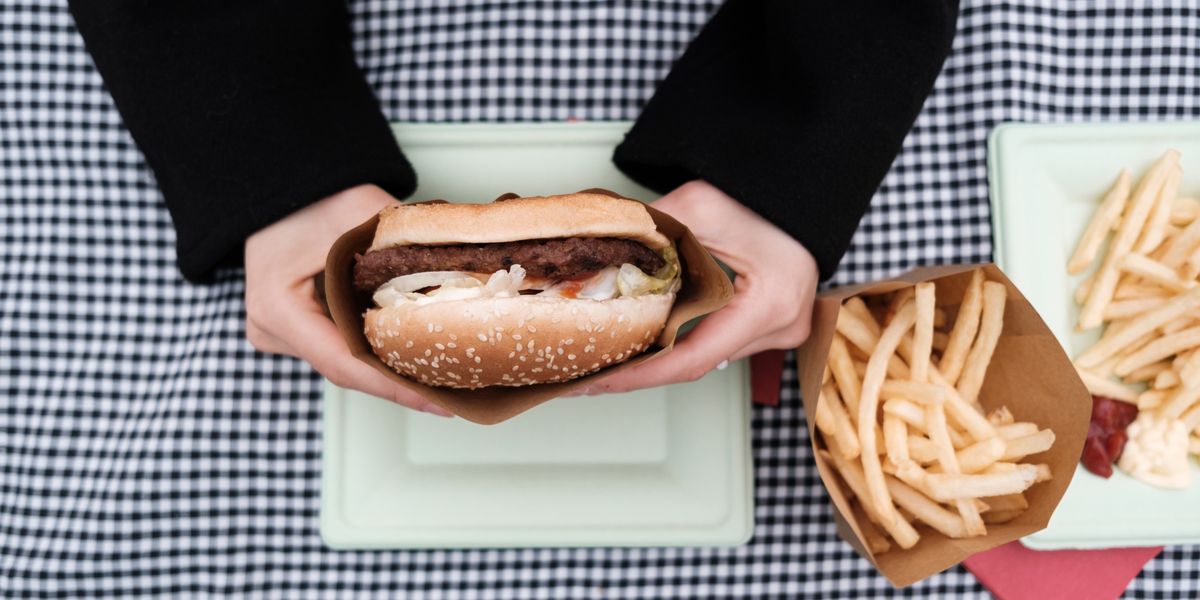
OK, let’s start with the bad news: a new report from Mamavation found evidence of PFAS chemicals in food packaging including a McDonald’s filet-o-fish carton, a Starbucks’ sandwich wrapper and a KFC bucket of fried chicken.
That’s not good. But many of these fast-food and fast-casual restaurants have announced plans to ban the “forever chemicals” and for some — Taco Bell, Wendy’s, Sweetgreen and others — it seems to be working. In total 35% of 81 pieces of fast-food packaging showed detectable levels of organic fluorine, an indicator of the group of chemicals known as PFAS, according to a new report from Mamavation.
Partnering with EHN.org, the environmental wellness blog and community had the packaging tested by a U.S. Environmental Protection Agency-certified lab and found levels of organic fluorine ranging from 10 parts per million (ppm) to 469 ppm.
Organic fluorine is a strong indicator of per- and polyfluoroalkyl substances, also known as PFAS or “forever chemicals”— which have been linked to everything from cancer to birth defects to lower vaccine effectiveness.
EHN.org partially funded the testing and Pete Myers, chief scientist of Environmental Health Sciences, which publishes Environmental Health News, reviewed the findings. The report builds on previous fast-food packaging testing and EHN.org and Mamavation’s growing library of consumer products tested for evidence of PFAS, including products such as contact lenses, pasta and tomato sauces, sports bras, tampons, dental floss, electrolytes and butter wrappers.
It also comes on the heels of an EHN.org investigation, What we know about PFAS in our food, that found due to inadequate testing and a lack of regulation, we’re all eating PFAS.
Linda S. Birnbaum, scientist emeritus and former director of the National Institute of Environmental Health Sciences and National Toxicology Program and scholar at residence at Duke University, told Mamavation that fast-food packaging remains one of the main ways people are exposed to PFAS. She pointed to the patchwork of PFAS legislation happening at the state level as inadequate to fully protect consumers.
“We support states that pass legislation to curtail these problems, but we worry that brands may have just moved their more toxic packaging to other states that allow it,” Birnbaum said. “So the next step here to protect consumers would be federal legislation banning PFAS in food packaging so that all states comply. This is essential to protect the public.”
PFAS: from packaging into our food
PFAS have previously been found in food packaging such as pizza boxes, sandwich wrappers, French fry containers and popcorn bags. The chemicals are excellent at resisting grease and stains. They are either added intentionally into food packaging — or can contaminate the packaging unintentionally.
But they can migrate from packaging into food. People who eat more takeout, fast-food and pizza often have higher levels of PFAS in their bodies than people who regularly cook at home, according to a 2019 study.
“When we buy food for our families—our spouse, our children, and our grandchildren—we should not have to worry about forever PFAS chemicals. This is especially true of little ones,” Terrence Collins, Teresa Heinz professor of green chemistry & director of the Institute for Green Sciences at Carnegie Mellon University, told Mamavation.
Fast-food PFAS bans
Many fast-food restaurants — including Burger King, Tim Horton’s, Popeyes, Chick-fil-A, Starbucks, McDonald’s, Panera, Sweetgreen, Taco Bell and Wendy’s — have committed to phasing out PFAS in their packaging.
Mamavation tested some packaging from all of these restaurants and did not detect evidence of PFAS in Taco Bell or Wendy’s wrappers.
In addition, Sweetgreen announced in March 2020 they would get rid of PFAS in their molded fiber bowls, however, Mamavation found PFAS in the bowls in late 2022. A few months after Mamavation let them know of the concerning results, they announced nationwide changes to the bowls. And this testing round? No detected organic fluorine.
What fast-food restaurants have PFAS-free packaging?
Mamavation did not detect evidence of PFAS in packaging from 18 fast-food restaurants, including some popular companies like Arby’s, In-n-Out Burger, Subway, Little Caesars, Dunkin Donuts and others.
To see the full list of brands test — and which ones were contaminated — please see the new report at Mamavation.





